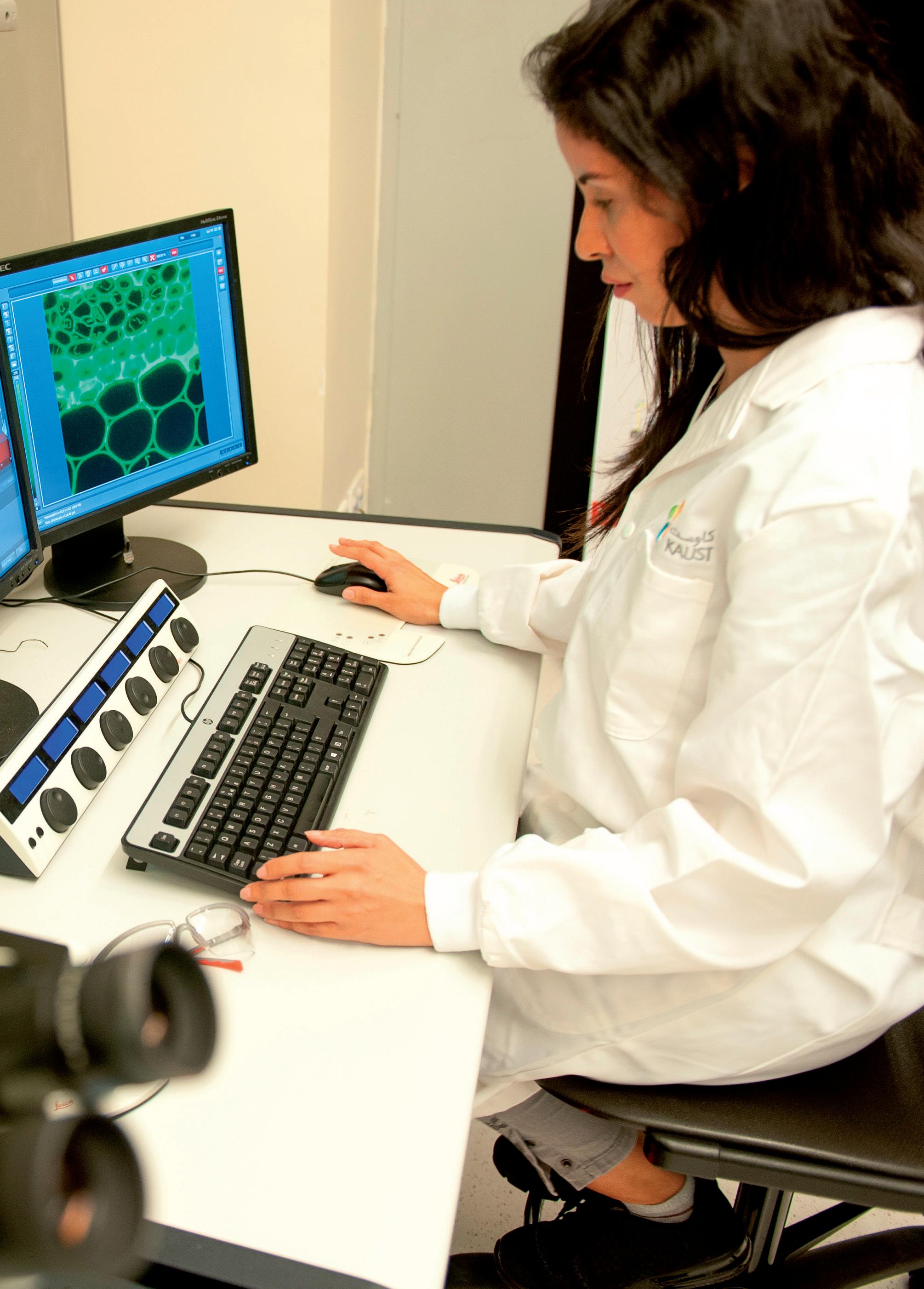
4 minute read
Tracking Virus Changes
from KAUST Impact - Spring 2020
by KAUST
Tracking how the SARS-CoV-2 virus mutates is a key concern of health officials around the world. All viruses mutate, and as they do, their behavior and the symptoms they produce in their host can change. As it mutates among different populations, scientists have identified three broad SARS-CoV-2 genetic groups present across the globe. Any effective vaccine would need to be able to treat all these strains. Researchers at KAUST are leading efforts to track SARS-CoV-2’s mutation in Saudi Arabia, creating databases that could help health officials prepare for and isolate the most virulent strains of the virus.
TRACKING VIRUS MUTATIONS: Scientists and health officials need to collect and analyze thousands of SARS-CoV-2 samples to track mutations. In Saudi Arabia, Professor Arnab Pain and his team at KAUST have been working with the Ministry of Health (MoH) and the Saudi Center for Disease Control and Prevention (CDC) to systematically track mutations in the genetic material of SARS-CoV-2 since the outbreak of the pandemic. Using samples taken from COVID-19-positive individuals in the country, they are building a database of the genomes of SARS-CoV-2 viruses circulating in Saudi Arabia. This data is then analyzed and compared to global datasets to develop an individual genetic ‘barcode’ of all known SARS-CoV-2 viruses. Genetic barcoding of SARS-CoV-2 viruses can assist public health officials in monitoring virus mutations and transmissions. By combining SARS-CoV-2 genome data with clinical metadata, health officials could potentially identify the genetic features and locations of the most virulent and transmissible local virus strains, and then target interventions accordingly.
Advertisement
VIRUS MONITORING: Professor Mo Li’s lab is developing an ultra-sensitive and accurate diagnostics method that can detect and sequence the SARS-CoV-2 virus’ genomes, and provide invaluable data on its mutations. All of this can be done remotely and in real time using a pocket-sized sequencer called Oxford Nanopore minION. Currently, clinicians must ship samples collected in the field to centralized labs, a process which leads to delays and potential sample contamination. Using the Oxford Nanopore minION, clinicians can sample, sequence and detect the virus all in the field. While allowing for quicker diagnosis of infections, this method will also provide invaluable sequencing data that Professor Li’s team will use to monitor the virus’ mutations. Once validated with clinical samples, the diagnosis method being developed by the team will allow clinicians to sequence thousands of virus samples in parallel in a matter of hours, and help health officials track the possible emergence of more virulent strains.
ARNAB PAIN Professor of Bioscience and Principal Investigator at the Pathogen Genomics Laboratory

WE WOULD LIKE TO UNDERSTAND HOW THESE COVID-19 CASES – THE VIRUSES THAT ARE CIRCULATING IN THE POPULATION OF SAUDI ARABIA – ARE LINKED TO EACH OTHER, AND MORE IMPORTANTLY, HOW THEY ARE LINKED TO THE REST OF THE WORLD.
IMPACT
Once their test kits are deployed to the field, Professor Li’s team will be best placed to detect new virus strains in the country. With Professor Pain’s database, samples could then be compared to existing strains to assess virulence and tracked as they spread among the population. Professor Pain’s virus ‘barcode’ database could be crucial to the success of government interventions, as health officials would be able to more efficiently identify an imported strain of the virus and, in turn, assess the effectiveness of ongoing containment measures and adjust if needed. In the event of a second, deadlier virus outbreak, Professor Fischle’s work could prove key to understanding virus susceptibility and better prepare health care professionals.
MO LI Assistant Professor of Bioscience and Principal Investigator at the Stem Cell and Regeneration Laboratory


IF SUCCESSFUL, OUR TECHNOLOGY WILL MAKE IT POSSIBLE TO TEST MORE PEOPLE AND PROCESS HUNDREDS OF SAMPLES IN PARALLEL IN A TIMELY MANNER.

WOLFGANG FISCHLE Professor of Bioscience and Principal Investigator at the Chromatin Laboratory
DETERMINING VIRUS SUSCEPTIBILITY
One of the big unknowns for scientists and health officials is why a large proportion of individuals get infected by the SARS-CoV-2 virus but do not develop any recognizable symptoms, whereas some patients progress to having life-threatening symptoms. Professor Wolfgang Fischle’s research group is trying to solve the puzzle by testing whether epigenomic chemical modifications of DNA, such as methylation in a patient’s cells, might determine their susceptibility to COVID-19. In collaboration with Professor Pain, Fischle’s team is analyzing DNA methylation patterns of samples obtained from asymptomatic, mildly and severely affected COVID-19 patients. This data is then bioinformatically integrated with data on disease severity, viral load, survival and time to recovery, among other parameters, to derive diagnostic tools for identifying patients that will require special attention in hospitals before they develop life-threatening symptoms.









